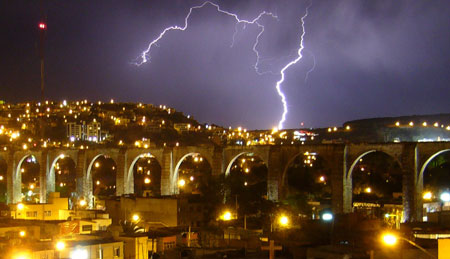Home » Mexico Destinations » Queretaro
Santiago de Queretaro
Founded in 1531 by Spanish Conquistadors, Santiago de Queretaro, commonly referred to as Queretaro (kair-AY-tero), is the capital and largest city of the Mexican state of Queretaro. Santiago de Queretaro Mexico is situated on the Mexican Plateau at an elevation of about 6,100 feet above sea level; it is located 130 miles northwest of Mexico City. Queretaro has received a lot of migration from other states and cities, and is one of the wealthiest and cleanest cities of Mexico.

Queretaro is not only the capital of the state of Queretaro, but today it's also an important important traditional location in the country. Archduke Maximilian fought his last battle here on the Hill of the Bells, where he was executed in 1867. And in 1917, Mexico´s current Constitution was drafted and signed here. Designated a UNESCO World Heritage site in 1996. Queretaro is considered an excellent example of a Spanish colonial city with its well preserved historic center. Pedestrian cobblestone streets called andadores connect Plaza de Armas with the street of Corregidora. West of this street the city resembles a chessboard, a distribution more common to Spanish cities. Beautiful churches such as San Francisco, Santa Clara, Santa Rosa de Viterbo and the Cathedral dot the area, as well as museums. These constructions are beautiful examples of baroque architecture, and their interiors house valuable altar pieces made by artists from the colonial period. The city also has picturesque arched colonial mansions, some of which have been converted into museums or elegant restaurants offering the best in regional cuisine. Constructed between 1726 and 1735, the aqueduct of Queretaro has gained national recognition as the symbol of the city. Built of local sandstone, its 74 arches reach nearly 1,400 yards east of the city; the highest arch soars some 75 feet above current-day street level. The aqueduct brought drinking water into the city from springs located on what are now the outskirts of town. It was put into service in 1738, furnishing water to the convents and filling the public fountains, an event which occasioned two weeks of public celebration.
- Activities
- Attractions
- Hotels
- Food
- Nightlife
- Shopping
- Events
- Activities